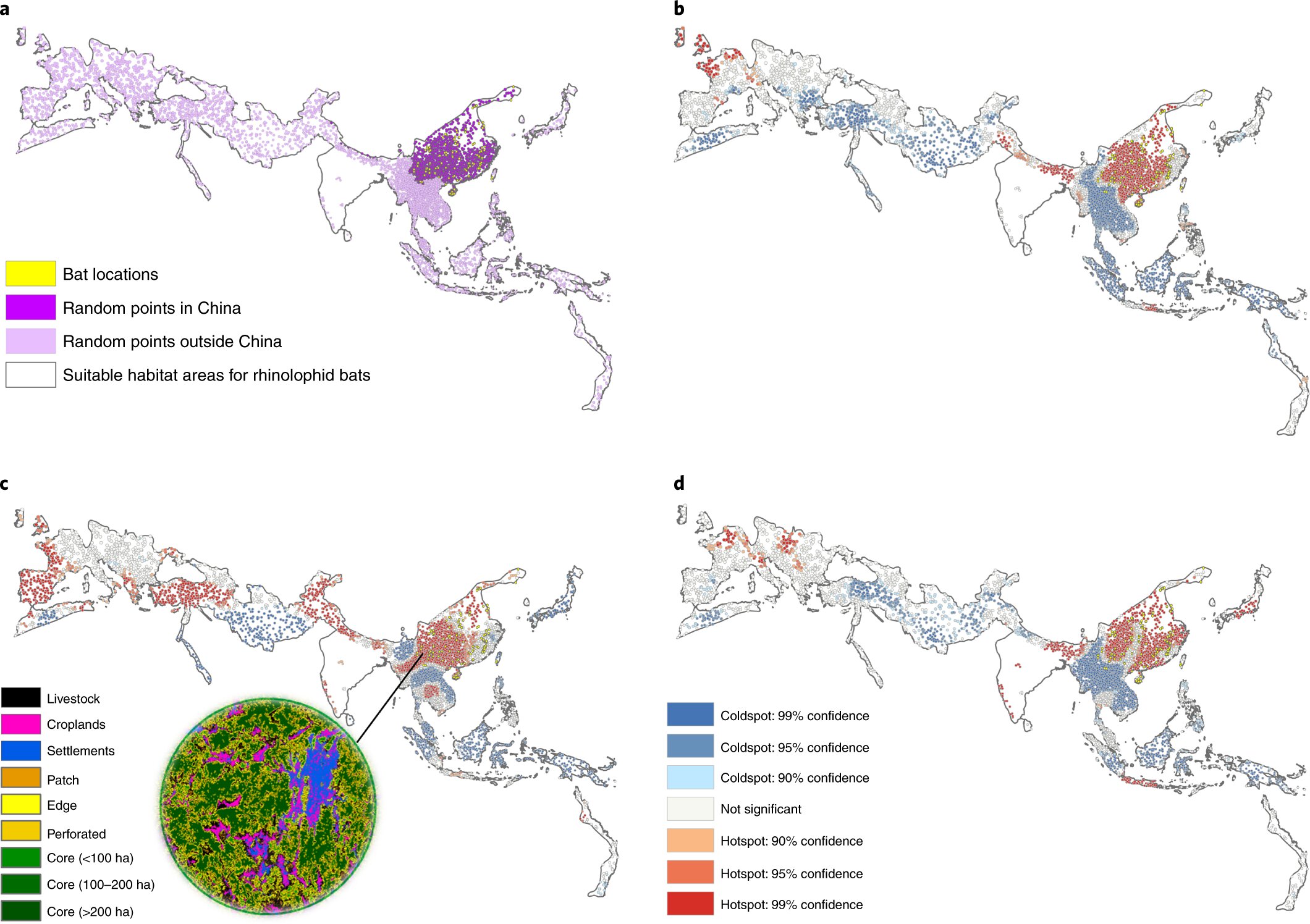Phys.org June 1, 2021
The extent to which humans facilitate zoonotic transmission of infectious diseases is unclear. Human encroachment into wildlife habitats, cropland area and intensive animal farming is hypothesized to favour the emergence of zoonotic diseases. An international team of researchers (Italy, USA – UC Berkeley, New Zealand) analysed comprehensive, high-resolution datasets on forest cover, cropland distribution, livestock density, human population, human settlements, bat species’ distribution and land-use changes in regions populated by Asian horseshoe bats (>28.5 million km2)—the species that most commonly carry severe acute respiratory syndrome (SARS)-related coronaviruses. They identified areas at risk of SARS-related coronavirus outbreaks, showing that areas in China populated by horseshoe bats exhibit higher forest fragmentation and concentrations of livestock and humans than other countries. The findings indicate that human–livestock–wildlife interactions in China may form hotspots with the potential to increase SARS-related coronavirus transmission from animals to humans…read more. Open Access TECHNICAL ARTICLE 1 , 2

Univariate spatial analysis of coronavirus outbreak drivers. Credit: Nature Food (2021).